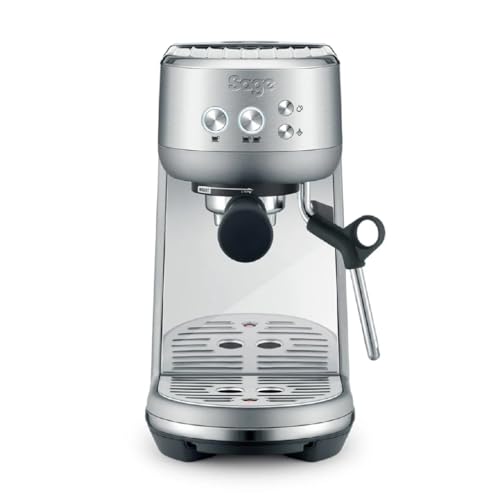How Does Machine Espresso Work?
The machine espresso is made using precise pressure, as well as a filter technology that is mind-blowing to make the coffee you enjoy. What exactly does it work?
Espresso is created by forcing hot water under pressure through finely-ground coffee. The process is similar to making drip coffee, but the difference is in the pressure.
The Head of the Group
The name implies the group head is where you place your portafilter when brewing espresso. It distributes water into the portafilter and regulates the pressure during the extraction. There are many different types of group heads each with its own advantages and disadvantages. Some are specifically designed for stability of temperature while others are specifically designed to handle pre-infusion. Others are built to control the lever. Some have a combination of features, such as the E61 that is the classic choice among many baristas because of its ability to offer multiple perks in one package.
As you can see in the photo above the head of the group is fitted with a variety of notches. The portafilter is placed into these notches and twist the head to secure it. There is also a gasket of rubber in the notches and helps to create an airtight seal when you insert your portafilter into the machine. The notches on the head allow for a precise positioning of the portafilter which is vital to ensure a consistent extraction.
The group head not only lets you to place your portafilter easily, but it also maintains a constant temperature. It does this by circulating hot water through the brew pan and around the portafilter, ensuring that it is always at the correct temperature to extract. It is important to realize that even a small deviation can make the difference between a great and a excellent espresso.
The Pump
Motorized pumps in espresso machines rotary provide nine atmospheric bar pressure needed for espresso extraction. This is different from manual piston machines which use levers. This pressure is built up by pumping water through a heat exchanger and then through the ground coffee.
Pumps tend to be less expensive than piston-driven machines, and tend to last longer, although both types of machines may be damaged by excessive use and inadequate cleaning. Pumps are also more complex mechanically, which can increase the cost of even most basic models.
Some espresso machines use steam pressure instead of a pump to brew espresso. The drawback is that the boiler that produces steam also raises the temperature of the water until it reaches boiling and can result in over-extraction. They also have to constantly rebuild their pressure in between cups. This requires energy and time.
Many espresso machines utilize the rotary or vibration pump, which is a vibration model using a rotating disc that generates the pressure, and a rotary model pushing hot water through the grounds under high speed. Both machines can make excellent espresso, however rotary machines are quieter, more durable and less likely to fail.
The Boiler
The boiler will heat the water to a temperature that is ideal to extract. The steam that is produced reaches the portafilter, which is a container for espresso grounds. It is then poured into the cup. The steam causes enough pressure to push the grounds of the coffee through. This creates a layer crema on top. This is one of the main characteristics of a good espresso.
There are three different types of espresso machines, each with distinct pumps and the temperature of the brew. There are various ways in which the brew can be controlled, as well as the dimensions of the cup the machine is capable of making.

espresso coffee machine Coffeee UK were steam-types. The earliest espresso machines were steam types. This resulted in the coffee tasting burnt and bitter. This is the reason why Milanese manufacturers Luigi Bezzerra and Desiderio Pavoni developed the modern espresso machine.
The most common espresso maker is a semi-automatic machine that has an electric pump. This is what people envision when they think of an espresso maker. With a semi-automatic espresso machine, you need to grind the beans and tamp them by hand. However, the pump provides regulated water flow and pressure. This is a great compromise between the human touch and the mechanized consistency.
The Filter
Typically, espresso machines utilize filters to separate the coffee grounds as they pass through the hot water. The filter is also a crucial part of the temperature control system because it stops the machine from overheating.
Filters also aid in flavor since it allows for a longer flowering phase. This lets the beans release their flavors, and allows for better extraction.
It is important to keep in mind that even the finest filter could result in a poor cup of coffee. The quality of the beans, and the extraction, are still very important.
This is where the magic happens, it's what makes espresso taste good. The grouphead (also known as the brewhead) is where you place the portafilter, the device used to place the coffee grounds into, when making espresso.
In a steam-driven espresso machine hot water is heated in an airtight tank to create steam, which then pushes the hot water through the grounds at a high pressure. These kinds of machines are typically cheaper and easier to maintain than pump-driven models. However, they are limited in their ability to produce the perfect conditions for brewing, because they operate at 1-1.5 bars of pressure, while the perfect shot requires 9-10 bar.
In recent years, compressed air pump-driven espresso machines have been gaining popularity. They utilize an air compressor to push hot water through the ground. They are also more mobile than electric steam-driven espresso machines.
